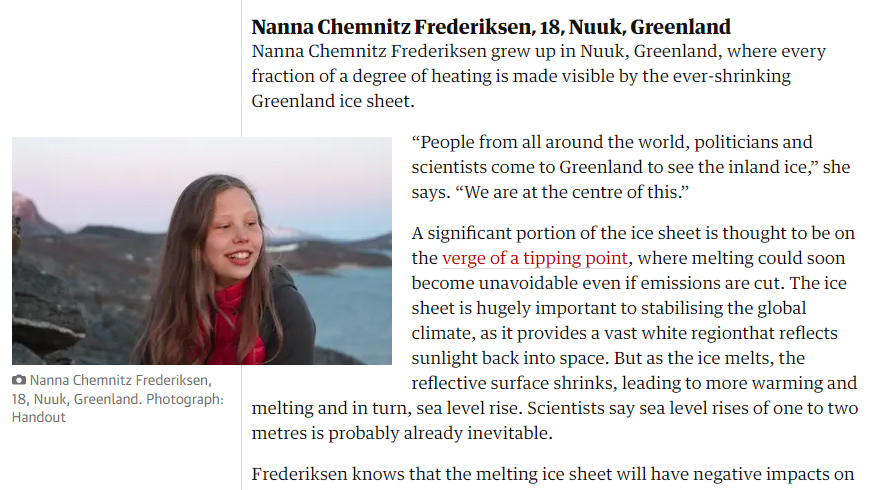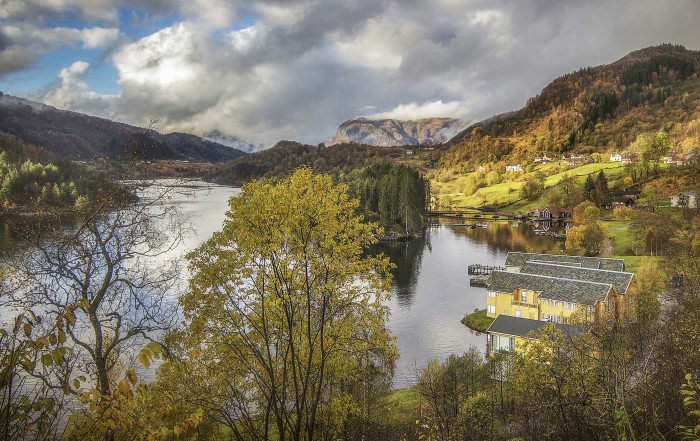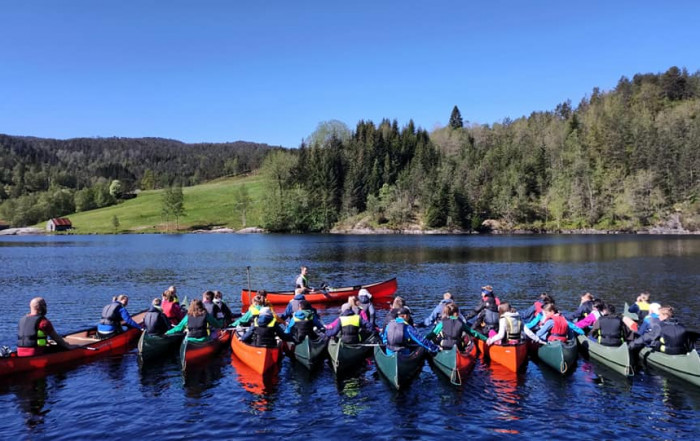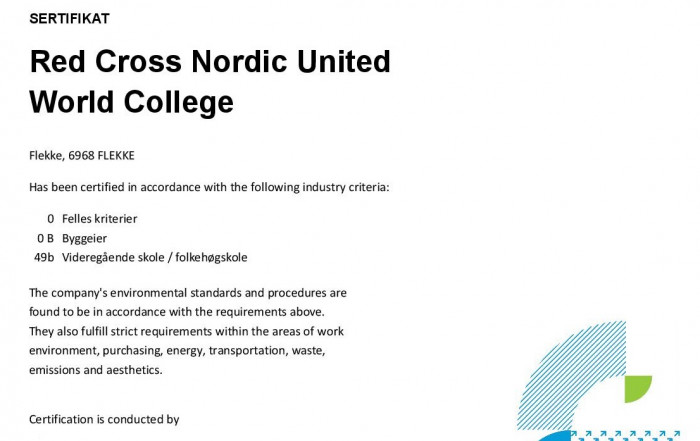“People from all around the world, politicians and scientists come to Greenland to see the inland ice,” she says. “We are at the centre of this.”
A significant portion of the ice sheet is thought to be on the verge of a tipping point, where melting could soon become unavoidable even if emissions are cut. The ice sheet is hugely important to stabilizing the global climate, as it provides a vast white region that reflects sunlight back into space. But as the ice melts, the reflective surface shrinks, leading to more warming and melting and in turn, sea level rise. Scientists say sea level rises of one to two metres is probably already inevitable.
Frederiksen knows that the melting ice sheet will have negative impacts on communities across Greenland, especially in northern settlements such as Qaanaaq where permafrost melting is destabilizing homes and roads and impacting how fishers and hunters operate.
But her real concern lies on the impact it will have globally. “I am not so scared of what the effects of the melting of ice in Greenland will be,” Frederiksen says, “It scares me what effect it can have for the rest of the world.”
Latest News
Start of Term August 2021
On July 2nd the Norwegian Government announced that all foreign students will be given exemption from travel restrictions to enter Norway. This means that all students enrolled at our college are entitled to [...]
Busy summer at RCN Campus
We are now ready for the summer season on campus, with approximately 750 participants. We start Monday 28th June with an activity camp for local children before hosting 7 different camps for the Red Cross. [...]
Eco-lighthouse recertification
Miljøfyrtårn or Eco-lighthouse is Norway’s most widely used environmental certification scheme It is an EU-recognised system, like EMAS and ISO 14001. With Eco-lighthouse we work to create more environmentally friendly operations, sustainability education, [...]




